The development of organic solar cells (OSCs) has seen significant advances in terms of materials invention, power conversions efficiencies (PCEs) and device stability. With that in mind, the efforts of the Departments of Materials Science and Engineering (MSE) at Southern University of Science and Technology (SUSTech) have continued to make significant progress in this field.
MSE Professor Guo Xugang has led his research team to publish several important papers in high-level journals such as Energy & Environmental Science (IF = 33.23), Advanced Materials (IF = 25.81), Advanced Energy Materials (IF = 24.88), Advanced Science (IF = 15.80) and Advanced Functional Materials (IF = 15.62).
The recent paper in Advanced Materials was titled “A Narrow-Bandgap n-Type Polymer Semiconductor Enabling Efficient All-Polymer Solar Cells.” The research group studied imide-based n-type polymer semiconductor materials, as imide-based polymers have now evolved into the most important n-type semiconductor materials that provide the highest power conversion efficiency in all-polymer solar cells (PSCs). One of the biggest bottlenecks associated with imide-based polymer semiconductors is their limited absorption of solar irradiation.
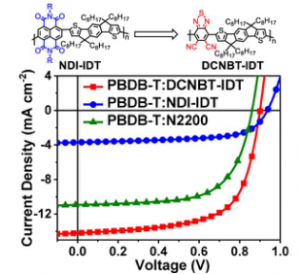
The research group led by Professor Guo Xugang developed a novel n-type polymer semiconductor having a much narrower bandgap than imide-based ones and providing far more efficient sunlight absorption, which has laid the groundwork for further development of novel narrow bandgap n-type polymer semiconductor materials. Such a development could lead to more efficient all-polymer solar cells in the future.
The other paper that was also published in Advanced Materials, titled “Dopant-Free Small-Molecule Hole-Transporting Material for Inverted Perovskite Solar Cells with Efficiency Exceeding 21%,” examined advances in perovskite solar cells and used the imide-based electron-deficient unit as the key building block. Such an approach was able to break the efficiency record of the inverted perovskite solar cells based on the organic small molecule, providing new concepts and material systems for the development of efficient and stable perovskite solar cells
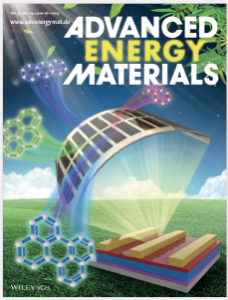
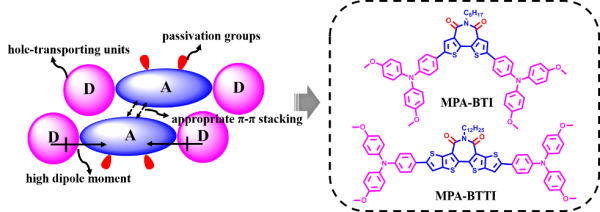
Advanced Energy Materials published a paper entitled “Facile Synthesis of Polycyclic Aromatic Hydrocarbon (PAH)-Based Acceptors with Fine-Tuned Optoelectronic Properties: Toward Efficient Additive-Free Nonfullerene Organic Solar Cells”. The research team proposed a new design idea for small-molecule receptor materials for nonfullerene organic solar cells, with polycyclic aromatic hydrocarbons as the core, which greatly shortens the synthesis steps and reduces the cost of photovoltaic materials. It provides a new material system for the development of organic solar cells with higher efficiency and lower cost.
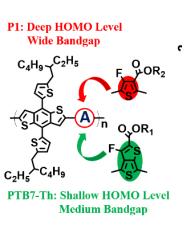
“Imide-Functionalized Heteroarene-Based n-Type Terpolymers Incorporating Intramolecular Noncovalent Sulfur∙∙∙Oxygen Interactions for Additive-Free All-Polymer Solar Cells” was published in Advanced Functional Materials. The research team studied the design of n-type terpolymer acceptor materials for organic solar cells. In this work, intramolecular sulfur∙∙∙oxygen (S∙∙∙O) noncovalent interaction was introduced into n-type polymer receptors for the first time, and a new strategy for constructing high-performance polymer receptors was proposed. As a new idea and simplest method to adjust the morphology of photoactive layer of all-polymer solar cells, the paper provides materials design basis for the development of highly efficient and stable all-polymer solar cells.
Advanced Science published “A New Wide Bandgap Donor Polymer for Efficient Nonfullerene Organic Solar Cells with a Large Open-Circuit Voltage”, which reported organic solar cells processable by green solvents. The team synthesized new high-performance monomers for p-type polymer semiconductors, obtaining open-circuit voltages greater than 1 V. The paper provides a new material system for the development of organic solar cells with high efficiency, low energy loss and suitability for green solvent processing.

The last paper, published in Energy & Environmental Science, was titled “A monothiophene unit incorporating both fluoro and ester substitution enabling high-performance donor polymers for non-fullerene solar cells with 16.4% efficiency.” This paper made an important advance in non-fullerene organic solar cells, and for the first time, fluorine atoms and esters (the most widely used electron-withdrawing groups) were introduced into the two β-positions of monothiophene, and a novel thiophene derivative (the most basic and important building block in organic solar cells) was constructed. The research team synthesized the first high-performance polymer donor material based on a novel thiophene derivative FE-T and achieved a remarkable power conversion efficiency of 16.4% in non-fullerene organic solar cells. More importantly, the energy loss of the solar cell is only 0.53 eV, and the non-radiative recombination is only 0.23 eV.
SUSTech was the first affiliation for these papers and Professor Guo Xugang was the correspondent author. Other significant participants in the works include Research Assistant Professor Dr. Sun Huiliang, Presidential Distinguished Postdoctoral Fellow Dr. Wang Yang, research assistant Shi Shengbin, Ph.D. students Liu Bin and Tang Yumin and several undergraduate students.
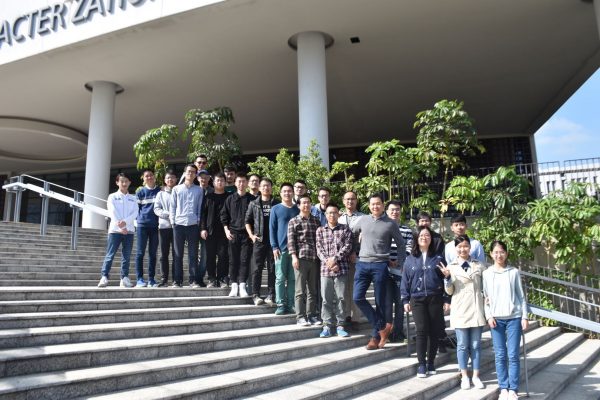
Since joining SUSTech, Professor Guo Xugang has published 70 papers in high-level journals, including Nature Photonics, Nature Energy, Chemical Reviews. Among them, his papers published in Nature Photonics and Chemical Reviews papers have been cited more than 500 times.
Proofread By
Photo ByDepartment of Materials Science and Engineering